Be Thankful for Orthodontic Treatment
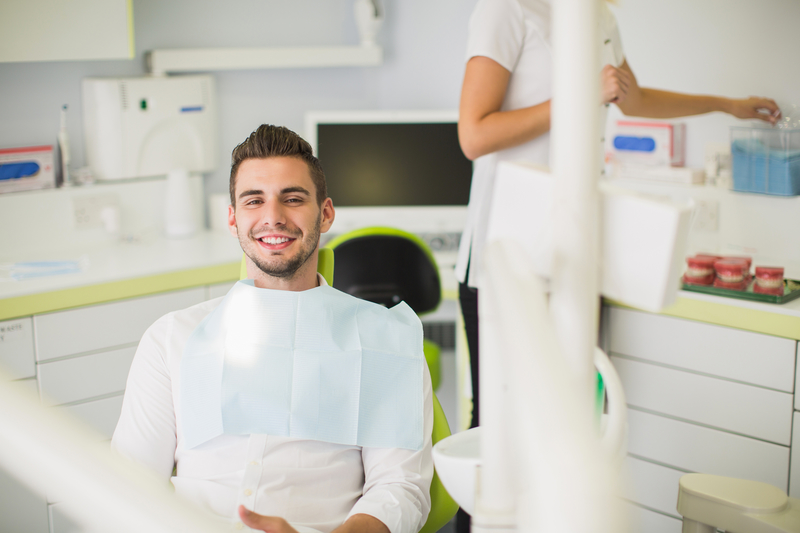
Studies show that not enough Americans are taking good care of their teeth, especially through dental and orthodontic treatment. The advanced technology available today is what allows patients to keep their natural teeth healthy for life and is something that millions in the world don’t have access to. Find out why oral health services such as orthodontic treatment is so important to patients and something to be thankful for this time of year!
Your Oral Health
When you think of the most chronic conditions and diseases that plague people today, you may not think of cavities as being one of the them. The National Institutes of Health reports that tooth decay—or cavities—are the most “chronic, prevalent disease” among American children and adults. In fact, about 92% of people have tooth decay by the time they reach adulthood. In all age groups, roughly between 20% and 25% of people have untreated decay they are not aware of.
What does tooth decay have to do with orthodontic treatment? This decay can happen to anyone at anytime and you are more likely to have tooth decay during your orthodontic treatment. Many patients opt for lingual, ceramic or traditional metal braces to straighten their teeth. These methods require brackets that are bonded to the teeth with wires that pass through those brackets. Even though these appliances are highly effective for providing beautiful straightening power, they can make it harder to clean your teeth. Because it’s harder to clean them, and some patients don’t take the extra time to do this, you can end up with tooth decay. That adds to that 92% statistic.
The best way to eliminate your risk for that tooth decay (as well as other oral health diseases), is to properly care for your teeth both with and without braces. That involves brushing your teeth at least twice a day for 2 minutes at a time, as recommended by the American Dental Association. When you have braces, you have to do this after every meal to avoid acidic plaque buildup, which happens when your food and drink sugars mix with mouth bacteria. With braces, threadable floss to go around brackets and wires is generally needed, as well as cleaning items such as a waterpik (water shooter) tool and a proxabrush for brackets. Your oral health can be stellar during orthodontic treatment with the right oral hygiene.

How Does the U.S. Compare?
Orthodontic treatment is a time when those in the U.S. can have a greater risk for developing cavities. This comes from a lack of oral hygiene during your orthodontic treatment period. However, the world at large is battling oral health diseases and poor dental and orthodontic care on an epidemic scale. The World Health Organization reports that cavities (tooth decay) and gum disease (periodontal disease) “have historically been considered the most important global oral health burdens”.
60%-90% of people worldwide have tooth decay and oral diseases connected to this condition. Children are affected the most, but statistics are almost as high in adults worldwide. Even though the U.S. is at a high percentage when it comes to tooth decay (92%), the presence of tooth decay is generally eliminated in most of the population through proper dental work and access to dental services. In the majority of other countries—especially underdeveloped ones—dental or orthodontic work is not a possibility for most. Oral health diseases are simply left untreated or the teeth are pulled when they become too painful.
The Connection to Orthodontic Treatment
Getting a cavity or having an oral health problem during your life can definitely be avoided, but most people will have some sort of oral problem, even if it is small. There are ways to prevent those problems such as proper brushing and flossing every single day. A great way to reduce your risk for oral health diseases is through orthodontic treatment. For children, this is known as child orthodontics. The American Association of Orthodontics recommends that children have their first orthodontic appointment between age 7 or 8.
This is a time when baby teeth are starting to fall out and adult, permanent teeth are starting to come into the mouth. Proper examination by an orthodontist can sport bite and alignment issues that are developing in children. When these issues occur, the teeth can come in crooked all over or they may not rest in the position they are supposed to. This can lead to speech impediments, many dental emergencies and broken teeth in the future from uneven dental pressure, higher instances of tooth decay and gum disease, and problems with oral health diseases.
Orthodontic treatment when young can help align the teeth and jaws to prevent oral problems as a child grows. When teens and adults receive orthodontic treatment via braces, they can better straighten permanent teeth when they come in. This sets everything straight and functional before the jaws harden in adulthood. Straight teeth and aligned jaws make it so cleaning the teeth becomes almost effortless. The risk for tooth decay and gum disease is also significantly lower.

Be Thankful for Your Orthodontic Treatment
Dentistry and orthodontic treatment helps diminish the presence of oral diseases.Yes, tooth decay and gum disease happen frequently due to poor oral hygiene habits. However, orthodontic treatment can help prevent those problems in the first place. Great oral care can prevent developing problems throughout your life. Even when these issues do happen, you won’t have to simply get your teeth pulled or let them decay and fall out of your mouth.
You have great orthodontic and dental options in the United States that allow you to keep your teeth, while many people across the globe have to lose them. Remember that the next time you think about skipping your oral care appointments. To reduce your risk for oral health diseases, you can call Belmar Orthodontics at (303) 225-9016 and ask about your orthodontic treatment plan.
Foods and Drinks that Harm Your Teeth

Did you know that what you’re drinking might be hurting your oral health? Many patients experience problems like tooth erosion and thinning without realizing that the problem is what they’re eating. Use this guide to know the effects of foods and drinks on the teeth and what to watch out for!
Wear and Tear on Your Teeth
Your teeth are made of tightly-packed minerals that keep them strong and healthy. Those include calcium, phosphate, magnesium and more. Your saliva helps break down your food and helps to remineralize your teeth each day. Eating certain foods and drinks can strip minerals from your teeth slowly over time, making them weak, sensitive and thinner. These are common oral health problems with age. However, thinning (or enamel erosion) and sensitivity usually come from a lack of oral hygiene. If you enjoy a daily soda or you love your sweet treats throughout the day, you may be weakening your teeth at a rapid pace.

Foods that Cause Damage
Some foods build up your tooth enamel and help it, like dairy products helping to remineralize calcium. Others—like sugar—tear it down. Avoid these foods to keep your smile healthy:
- Anything Citrus: This includes both foods and drinks. Citrus fruits (lemon, lime, orange, etc.) and drinks contain citric acid. This is there naturally or as an additive to maintain flavor. Any type of acid on a label will erode your teeth if you ingest it.
- Sugar: Sugar mixes directly with mouth bacteria to form a sticky film called plaque. That plaque sticks to teeth and causes decay. Because it’s acidic, it will work on your teeth to erode and decay them. The more sugar you eat, the more plaque your mouth makes, and the more erosion and decay you get. This is especially true while wearing braces.
- Hard Candies/Mints: Any candy or mint you suck on (like a sucker) exposes your teeth to sugar constantly, which leads to decay from plaque acid.
- Chewy/Sticky Candy: Any chewy/sticky consistency is destined to get stuck in brackets and wires. It also sticks like glue to the teeth if they’re not brushed properly.
- Starchy Foods: Breads, cookies, crackers, pasta and anything starchy will get stuck in your teeth. All of these quickly break down into sugar, which can affect your teeth and your overall health.
- Popcorn: Popcorn and hard foods like nuts, hard veggies and fruits and non-food items can be bad for your teeth with braces, as they can break your orthodontic appliance. Limit them to avoid orthodontic emergencies.

Drinks to Avoid
Drinks can be even more damaging than food in many cases. That’s because you can drink all day long, and if your drink is acidic, those acids stay on your teeth up to 30 minutes. Soft drinks (soda/sports drinks) are notorious for high sugar content. That sugar can create tons of plaque in your mouth that causes decay. As we mentioned, that combination is acidic. Every time you drink, your are making plaque that can weaken your teeth.
Avoid these drinks that are acidic, sugary or can stain:
- Soda: This contains carbonic acid, which comes from a chemical reaction between carbon dioxide and water. It stays acidic on your teeth for up to 30 minutes. Most sodas are incredibly high in sugar, which means they are doubly bad for you.
- Energy drinks, etc.: Energy drinks, sparkling water, and any drink of the sort that contains carbonic acid. Avoid drinks with fizzy bubbles or limit their contact with the teeth by drinking through a straw.
- Sports Drinks: These drinks are often full of sugar, plus citric acid to maintain flavor. Avoid them and stick to water.
- Water Enhancers: Water-flavoring liquids or powders generally contain citric acid to maintain flavor. Even if the substance is clear, the acid will still erode teeth even if the drink isn’t staining them.
- Alcohol: Many contain carbonation (carbonic acid) and all will kill nerves in your mouth, leading to loss of feeling over time.
- Coffee: This drink, tea, wine and anything with blue, purple or red pigments will stain the teeth. If you teeth are eroding over time, the dyes get into small cracks in the teeth, changing tooth color rapidly.
Damaging Habits that Harm Your Teeth
If you want to have your teeth for life, you have to take care of them. You have to try even harder to care for them when you have braces. More than 4 million Americans are wearing braces each year. Some opt for Invisalign aligners, which are removable and which make cleaning the teeth fairly easy. However, many patients—especially children and teens—wear lingual, traditional metal or ceramic braces. All of these types of braces have brackets bonded to the tooth surface and wires that hold them in place.
If you don’t brush and floss like normal, your teeth can decay, erode and you can have problems with both gingivitis or severe gum disease. Your teeth can weaken and break easy and they can fall out. That’s why you want to have meticulous oral hygiene all throughout life. Proper brushing, flossing, visiting the dentist or orthodontist, and using oral health products like mouthwash and fluoride can all help you keep your natural teeth healthy.
With braces, you can have your teeth become thin and weak based on what you eat, or they can decay and change colors based on how you care for them. You can definitely harm your teeth if you’re not cleaning your brackets, wires and teeth several times a day. Good oral hygiene care is vital to having a healthy and beautiful smile at the end of your treatment. An easy step to avoid problems is to avoid the foods and drinks we listed above. Be even more careful about those foods and drinks with braces. For specific questions about certain foods or drinks, or help for proper braces care, call Belmar Orthodontics today at (303) 225-9016!
Adjusting to Lingual Braces
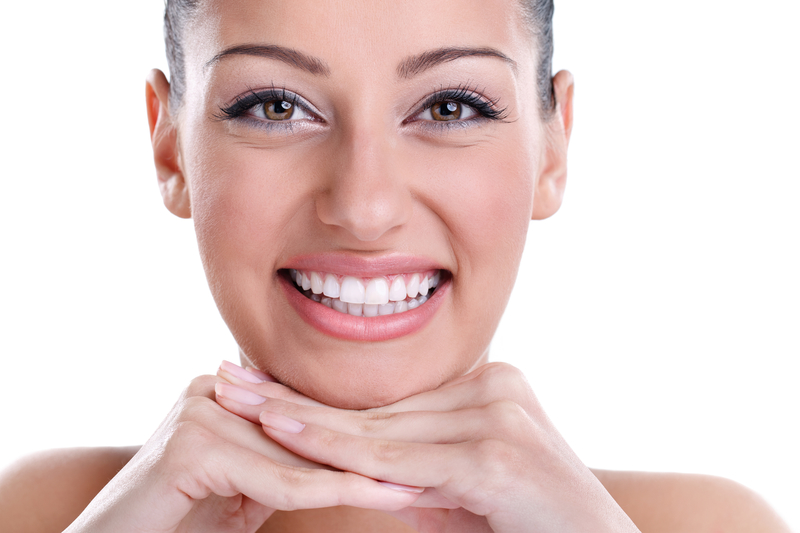
There are four main types of braces that include traditional metal braces, ceramic braces, lingual and Invisalign treatment. When patients want sturdy metal for effective straightening power, but they don’t want visible metal, lingual braces is the option to choose. This consists of an orthodontic appliance attached to the back of the teeth. With any orthodontic appliance attached to the teeth, there will be an adjustment period for patients.
Why Get Braces?
Many people wonder why they would need orthodontic treatment if they are already seeing a dentist. However, a dentist is not the same as an orthodontist. Both have gone to dental school, but only an orthodontist can correct bite and alignment issues that would cause oral health diseases, problems with speech and issues with eating. Straighter teeth are teeth that are easier to clean, helping you avoid oral health diseases.
The teeth are less likely to crack, chip, fracture or break from uneven biting pressure when they are straighter. Studies show that people who straighten their teeth often feel more attractive, confident and motivated, and others view them that way as well. Braces can not only help reduce your risk of oral health problems (or help them to go away), but they can make you feel like a million bucks from the beautiful smile you receive.
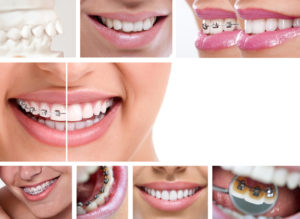
What Are Your Options?
In the past, traditional metal braces were the only braces option patients could get. Today, there are four main orthodontic options. Those include:
- Traditional Metal Braces – These are the classic metal bracket and wire option that is most commonly chosen by patients. Patients who chose this option come in to have their wires tightened at each appointment.
- Ceramic Braces – These braces are a close cousin to metal braces. They have the same bracket and wire design of metal braces, except that they are made out of ceramic material. This helps decrease demineralization during your orthodontic treatment. Ceramic material is also naturally white, helping these braces to blend in with your teeth more than metal would.
- Lingual Braces – These are metal braces that are placed on the back of your teeth. Instead of just a square bracket, the metal must be custom-made to the shape of the back of your teeth. This is a discrete option that adults and teens love.
- Invisalign Treatment – This is the most invisible option available to our patients. Invisalign is a series of transparent aligners that you wear at night and throughout the day. You can remove them for eating, playing sports, cleaning your teeth and more.
Adjusting to Lingual Braces and More
For many patients, the adjustment period with their orthodontic appliance will be a new experience. Getting braces on the teeth is a new and exciting chapter for anyone that is starting on their journey to a better smile. However, your mouth does have to physically adjust to orthodontic appliances. With traditional metal, ceramic, or lingual braces, there are orthodontic parts that will be bonded to the teeth with a cement-like bonding material.
The application of that bonding material with your teeth will place extra pressure on them for several days. You may have to take an over-the-counter painkiller (like Tylenol) to help ease that aching feeling. Soft foods like yogurt or pasta will be better after the braces application for sensitive teeth. Your tongue will have to adjust to orthodontic appliances as well. For traditional metal braces on the front of your teeth, they may feel bulky as they rest against your lips.
With lingual braces, your tongue may feel more crowded or may constantly run into the brackets. With both of these options, a patient’s mouth becomes used to the appliances so quickly that they won’t even notice the braces after a few days. Your smile won’t look bulky with your appliance, but it will start to look straighter over time. Cleaning your teeth will take a bit more work, but this too will become second nature to you. With each new braces adjustment, your teeth may feel a bit sore, but that feeling will go away quickly.

Keeping Your Smile Healthy
You can spend 18 or more months straightening your teeth, only to have them be decayed at the end of your treatment. However, this doesn’t have to happen if you are taking meticulous care of your teeth with braces on them. Patients should be brushing and flossing their teeth whether or not they have braces on them. The American Dental Association recommends that every person brush their teeth at least twice a day. With braces, you want to brush them very well after every meal to dislodge food that would cause decay.
Flossing is key as well, as flossing gets about 40% of your tooth surfaces that brushing misses. If you skip flossing all the time, all those tooth surfaces can decay. With braces, you won’t be able to do the normal flossing you’re used to. Lingual braces can be even harder if you can’t see where you are flossing. This is where flossing tools for braces come in handy. Invest in threadable floss or flossers (which is very similar). This is floss that you stick through the cracks in your teeth and pull through like a sewing needle. You floss the tooth, scraping the teeth as you go, and pull the floss all the way through the tooth to start on a new one. It only takes a minute or so more than normal flossing, but will help prevent decay with your lingual braces.
Braces Are an Investment
Your teeth may take a bit more time to keep clean with braces on them than they were before. However, with braces such as lingual braces, you’re making your smile straighter and more beautiful for years to come. That straightness will not only help make cleaning the teeth easier for years, but it will help your appearance and your confidence. If you want all the benefits of a beautiful, straight smile, call Belmar Orthodontics today at (303) 225-9016!
Braces Can Change Your Life
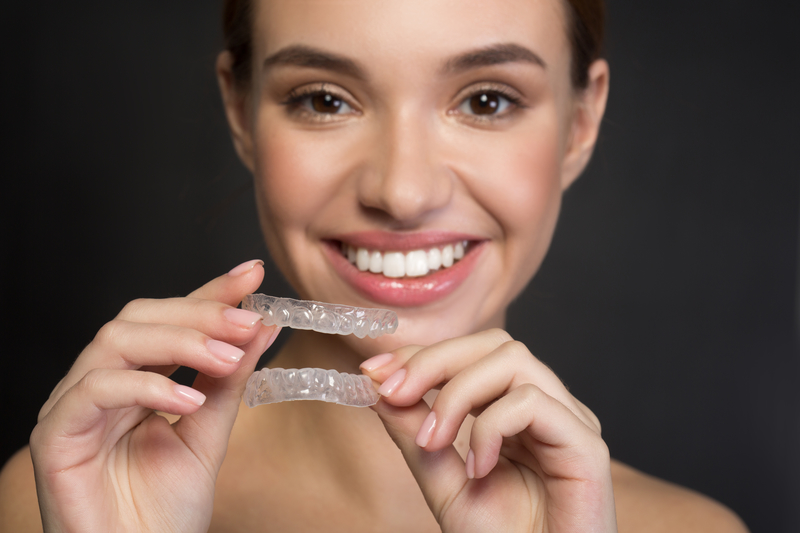
Your oral health can determine much of your overall health. Food and substances enter through your mouth, affecting your waistline, your appearance and your health. Your oral health can improve your overall health when you make changes in oral hygiene and bite and alignment. Misalignments in bites and crooked teeth can cause health and social problems, as they can lead to speech impediments, oral health diseases, and worsening chronic conditions. With braces, you can not only change how healthy your mouth is, but can change your life too!
Growing In Straight Teeth
Many people picture teens when they think of braces. However, 1/4th of people with braces are kids. Child orthodontics help straighten out teeth that would cause them speech problems, broken teeth and trouble growing in the permanent teeth. Adults and teens usually get them for crooked teeth.
However, braces aren’t just for people with crooked teeth. You may see patients young and old that appear to have a straight smile and yet they have to get braces. In this case, there is probably an oral health issue with the bite or alignment. Your teeth should line up along both the upper jaw and the lower jaw. When you go to the dentist, they will ask you to bite together so that they can view how your bite rests. How your teeth sit when they are resting together can determine if you will have dental issues and even speech impediments. This is especially true for young kids who are losing baby teeth and having adult teeth grow in.
Children have their baby teeth for years—even up to age 12 or later at times. Those baby teeth start to space out a bit more as a child grows from an infant to a school-aged child. Their mouth grows with them, making room for adult teeth. 20 baby teeth will become 32 adult teeth (including the wisdom teeth). However, those teeth don’t always come into the mouth in the right position or the right direction. With a healthy bite, the upper and lower jaws should have the teeth lining up evenly with one another. The teeth should be straight up and down, and the front upper teeth will rest just slightly in front of the bottom front teeth.
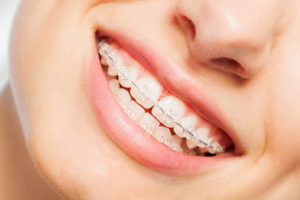
Braces Can Prevent Dental Injuries
When teeth aren’t straight and they jut out at different angles, it can mean broken, cracked or chipped teeth in the future. Those dental injuries would be caused by uneven pressure on certain teeth which will eventually break them or will cause areas of decay that you can’t clean well. The alignment of the teeth can also cause speech impediments when forming words, and those impediments can last for life if bite, alignment and crooked teeth aren’t corrected. For young children and adults alike, receiving braces for these issues can certainly change not only their oral health, but their life.
Braces are sometimes needed to make space in a patient’s mouth. Not all mouths grow to fit the incoming teeth, but that doesn’t mean the adult teeth won’t stop coming in. All your teeth will come in, even if they have to crowd out other teeth. That crowding can be painful and even one tooth coming in where there isn’t room can cause all of your teeth to go crooked. As a tooth comes in, it will slowly push other teeth from the area, which then have to shift. This is what wisdom teeth commonly do, and it can be painful as it messes up a smile. Braces can stop that from happening by making plenty of space in the mouth for teeth that are still coming in.
What If You Have Your Teeth Already?
The dental issues we have mentioned will generally happen before a person has reached adulthood. The American Association of Orthodontics recommends that children have their first orthodontic appointment around age 7 or 8. This is when we can see how the baby teeth are falling out and how the permanent teeth are coming in. We stop dental issues before they start forming, and during this time when the jaw bones are still soft enough to mold. However, at least 1/4th of patients that have braces get them when they are adults. The jaws have grow completely and have hardened into place by adulthood, making orthodontic treatment harder.
However, we said “harder”, not “impossible”. Orthodontic advancements can definitely help an adult change their smile to change their life. Now, more than ever, it is becoming increasingly important to have a straight smile as an adult. Studies show that others make an opinion of you based off of the first few seconds of meeting you. Your appearance can go a long way. Your smile is also one of the top 3 features others will notice first when formulating an opinion about you. Studies show that those with straighter teeth are seen as more attractive, successful, smart, healthy and trustworthy. Employers are more likely to hire those with straight smiles over those who don’t have them.

Your Options
If you’re an adult, you can straighten your smile without it being noticeable. Children often go the route of traditional metal braces or ceramic braces, which are the same but made from ceramic material. Adults and many teens opt for hidden options like lingual braces or Invisalign treatment. Lingual braces are metal braces that attach behind the teeth, staying hidden as they correct bite, alignment and your teeth. Invisalign treatment consists of transparent aligners patients change out every week. However, they don’t do as well with larger bite and alignment issues. It’s never too late to receive orthodontic treatment.
Whether you are young or old, you can change your smile to reduce or eliminate your problems with speech, tooth decay, oral health issues, dental injuries and to even feel more attractive. Want to see just how much braces can change your life? Call Belmar Orthodontics today at (303) 225-9016 to receive your free consultation!
Dental Services You Need During Braces
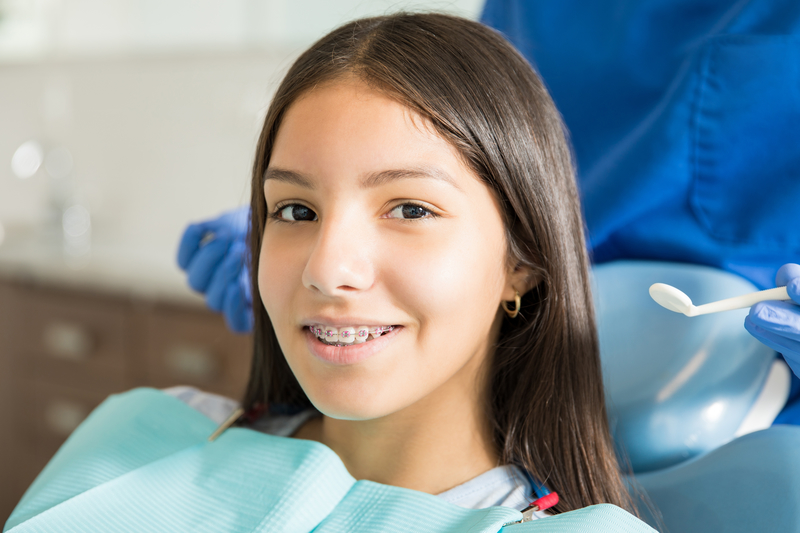
Getting braces through an orthodontist does not mean you should stop seeing a dentist for dental services. In fact, you may even need to get dental services more often with braces. This is because brackets and wires inevitably raise your risk for getting food and plaque stuck in your teeth. Those substances can then lead to quicker tooth decay, gum problems and tooth erosion. Find out what you can expect from your orthodontic visits and why you should keep scheduling in dental services during your treatment.
How Do Braces Change Your Teeth?
Not everyone will get braces during their lifetime. However, for those that do, they can change a smile in incredible ways. You may see children wearing braces from time to time. This is just so they can get a great smile, but that is part of it. Children should see the orthodontist around age 7 or 8 to determine if bite or alignment issues are present. If so, a child could grow up with speech impediments, problems with tooth decay and gum disease, and difficulty chewing, eating and biting. With interceptive orthodontics—or child orthodontics—we can correct those problems so a child develops properly.
With adults and teens, straightening treatment generally starts around age 11 or 12 and older. This is when most (if not all) of the adult teeth have come into the mouth. However, it’s common for the adult teeth to come in crooked, which can make people self-conscious about their smiles. When patients decide to get braces to straighten their teeth, studies show that confidence grows and people show their smiles more. That confidence can lead to more success in the future, motivation to do more and be more, and better oral health.
Straightening the teeth makes the teeth easier to clean. This is because crooked teeth can create areas in the mouth where the teeth are incredibly hard to clean. If you can’t brush nooks and crannies well or if you can’t pass floss through the teeth, those areas are likely to decay. Teeth that are crooked or at different angles also have different amounts of pressure placed on them, which can cause the teeth to crack or break under pressure. That is why straightening the teeth can help prevent not only dental emergencies, but also problems like tooth decay and gum disease.
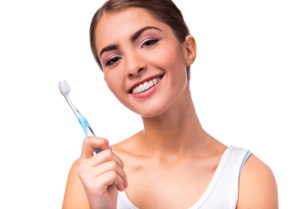
Changes You Want to Avoid
With your dental health, you always want to invest in dental services like dental cleanings, comprehensive exams and your own at-home cleaning. If not, you can start to develop problems with cavities and gum disease. Both of these conditions (as well as bad breath, oral sores and more) stem from poor oral hygiene. When you eat, bacteria in the mouth mix with sugars in your food to create a sticky film called plaque. That film is acidic and it sticks to your teeth instead of being swallowed. The acid erodes the layers of your teeth, decaying them to create cavities. This is how they form, and they can happen much easier with braces.
Three types of braces you can choose (traditional, lingual, ceramic) will require brackets and wires attached to your teeth. The brackets are bonded to the center of your teeth, with a wire that runs through them. Your brackets are areas where plaque and food can easily get stuck. If they become stuck or particles build up around your brackets, this can create areas of decay rather quickly. Many people also don’t floss like they should with braces because it takes just a bit longer. However, when food sticks around and you skip flossing, you are leaving about 40% of your tooth surfaces open to decay. That means, when you get your braces off, you’ll be left with areas of tooth erosion (or craters) and cavities.
You also want to avoid foods with dyes in them, including drinks. When you drink or eat something with dyes (like blueberries, strawberries, blackberries and drinks died those colors), then your tooth color can change over time. This could mean that you have small squares on all of your teeth at the end of treatment that are a different color than the rest of your teeth. Soda, juices and carbonated drinks can all do this as well, except that they will also wear away parts of your teeth.
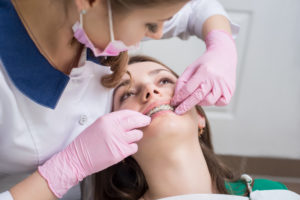
Continue Dental Services During Braces
All of those changes to your teeth can be avoided if you keep up on your personal hygiene at home and dental services in-office. This means, you should:
- Brush your teeth every single day, after every single meal, for two minutes each time you brush. Practice brushing at 45-degree angles to dislodge food from brackets and cover all the tooth surfaces. Use a proxabrush to dislodge stuck food even easier.
- Floss each day, at least 1-2 times. Use a floss threader or threadable floss to make this easy for you.
- Use a waterpik tool if you tend to get food stuck in specific places.
- Keep up on your braces adjustments and your orthodontic appointments.
- For dental services, make sure you visit the dentist at least twice a year for comprehensive exams and dental cleanings.
We want to focus on that last one. Dental cleanings and comprehensive exams are so important for the health of your mouth. With dental cleanings, the hygienists can do thorough cleanings on your teeth and brackets and spot the signs of erosion, decay and color changes. Those professionals can spot the signs of decay and gum issues. If needed, we can work with them to remove certain brackets where dental work is needed. Orthodontists and dentists are not the same even though they have had the same schooling. Make sure you are visiting both during your time with braces. If you want to avoid problems with cleaning brackets and wires, ask us about our Invisalign treatment option. You can do this by calling Belmar Orthodontics at (303) 225-9016!
Fun Facts About Orthodontics
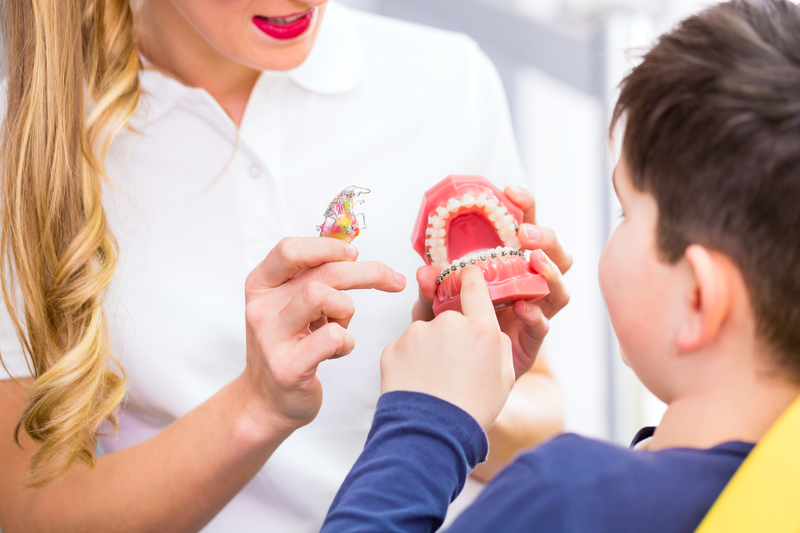
Did you know that an orthodontist is different than a dentist? Orthodontics is a dental specialty all its own, that has different goals and processes than what dentists do. There are many ways to fix the teeth and many methods that have been tried for many centuries. Find out the amazing history of orthodontics and some facts you may not know!
History of Orthodontics
People have been straightening their teeth since the time of the Ancient Egyptians, as can be seen from mummies from this era. Even the Romans and Etruscans used crude orthodontic straightening methods to get a better smile. Many philosophers hypothesized better ways to straighten the teeth. A Roman writer Celsus (1 A.D.) thought the teeth could be pushed into place. Pliny—around the same time—thought the teeth could be filed to be the ideal shape and size.
It wasn’t until 1728 that Pierre Fauchard—or the “Father of Dentistry”—made great strides with orthodontics. He first practiced crudely removing the teeth, replacing them straight, and tying them to other teeth so they could heal straighter. From his influence and others after him, modern orthodontics came to be. Matthaeus Gottfried Purmann developed dental impressions in the 17th century. In the early U.S. years, barbers and medical professionals experimented and performing small orthodontic treatments. This was until the first dental school was established in 1828.
Afterwards, J.S. Gunnell invented a form of headgear that was successful in straightening the teeth. Dental students and professionals figured out how to make a metal appliance to straighten individual teeth, which led to the now-used bracket and wire design in modern orthodontics. Before 1970, orthodontists wrapped wires around each tooth and required that headgear to straighten. This practice involved lots of metal in the mouth, which is why a better form (that we use today) was invented in the following years. Now, in the last 20 years lingual braces (braces behind the teeth) and Invisalign (transparent aligners) were invented to allow patients a hidden apparatus with orthodontics.
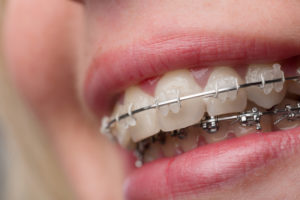
What Do Orthodontists Do?
Did you know that orthodontists are dentists? Every orthodontist is a dentist because they have completed dental school and then some. However, not all dentists are orthodontists. The standard requirements for dentists are to complete 4 years of undergraduate schooling and then 4 years at a dental school. They will have to pass exams and become certified to do dental work. Orthodontists do all of those 8 years, plus they complete 2-3 more years of orthodontics, training in bite and alignment correction and surgical orthodontics. All throughout their career, both dentists and orthodontists must do continuing education courses as well as pass tests to continue working.
An orthodontist will not fix your cavity even though they may spot the signs of tooth decay. Often, an orthodontist works closely with a dentist, as both professionals work on your mouth. What one professional doesn’t do, the other will do. Dentists do everything relating to tooth decay (cavities), gum disease and other oral health diseases as well as remedying dental emergencies. An orthodontist performs services that a dentist doesn’t do such as:
- Bite and alignment correction in children and adults (child orthodontics and adult orthodontics)
- Surgical orthodontics, which is surgery to help remedy a misaligned jaw or bite.
- Braces design, fitting, adjusting and complete process with lingual braces, ceramic (clear) braces, traditional metal, and Invisalign treatment.
- Training in placing temporary anchorage devices, which are tiny screws in the mouth that push, pull, lift or intrude teeth that are being straightened.
- Designing and creating retainer devices to keep bite, alignment and teeth in proper position.
Facts About Braces
- An orthodontist must complete 4 years of dental school, plus 3700 hours or specialized training in orthodontics to get their degree.
- There are more than 19,000 orthodontist members under the American Association of Orthodontics in the U.S., Canada and abroad.
- 1 in 4 people with braces are adults.
- Children make up another 1/4th of people wearing braces to correct bite and alignment.
- Because of modern technology, all four of your dental options (lingual, metal, ceramic and Invisalign) can straighten your teeth in about the same amount of time.
- It is possible to only get braces in either your upper or lower jaw if the other jaw is straight.
- The jaws stop growing as a child ages. That growth stops towards the end of the teenage years around 17 or 18. Straightening the teeth is effective for people after this age, but it may take longer than it would for children.
- Patients generally see their orthodontist every 6-10 weeks for braces adjustments. Patients with severe bite and alignment issues may need to come in more often.
- Orthodontists often usually have “DDS” or “DMD” after their names. This stands for “Doctor of Dental Surgery” and “Doctor of Dental Medicine”. Both are considered equal degrees, but the degree given depends on the dental school attended before orthodontic training.
- Materials used in metal braces are so light that they won’t set off metal detectors in airports.
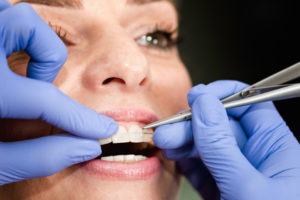
How Do Orthodontics Help People?
If you’ve never been to an orthodontist, you may wonder why you need one. Not everyone may need orthodontics to correct bite and alignment issues, but everyone should see an orthodontist at some point. The American Association of Orthodontics recommends that every person have an orthodontic visit between ages 7 and 8. This is prime time to detect bite and alignment issues that would lead to crooked teeth, speech impediments, oral hygiene diseases, and problems chewing, biting and functioning normally.
When issues are found, they can quickly be corrected so children can grow and develop normally. If a teen or adult wants to straighten their teeth to boost their confidence and success, they can receive braces starting around age 11. For specific questions about our orthodontic services, call Belmar Orthodontics today at (303 225-9016!
Choosing to Have Adult Braces

If you are an adult with crooked teeth, you may think that you already missed your opportunity to get braces. However, adult braces are very popular. In fact, at least 1/4th of all braces wearers are adults. You simply might not see braces on many of your peers because adults have a couple orthodontic options that stay hidden in the mouth. Find out if you should choose to have adult braces, what the benefits are, and what options you have to straighten your teeth discreetly!
Do Adults Wear Braces?
The American Association of Orthodontics recommends that every person have an orthodontic evaluation between the ages of 7 and 8. This is prime time for orthodontists to correct bite and alignment issues that can become severe as a child ages. However, not everyone knows that they need to see an orthodontist, nor do many people have the means to receive orthodontic care due to cost. That opportunity may come when you are an adult. Have you missed the mark if you’re already an adult instead of a child? Certainly not!
Orthodontic treatment is a bit harder when you are an adult, but it is not too tricky for us to manage. Orthodontists recommend that children and teens get braces for bite, alignment and issues with crooked tooth when young. This is because the jaws are still growing and the teeth and jaws are more moldable until a teen grows older. As an adult, the jaws have hardened into place, so shifting the teeth and jaws is much more difficult.
However, modern technology definitely allows adults to change their smiles as they please. In fact, 1/4th of all people wearing braces are adults! Adult braces are becoming more and more popular as jobs become more competitive. Adult braces can really give people the edge they need to succeed because it creates a more beautiful, straight smile.
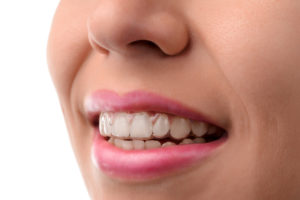
Benefits of Choosing Adult Braces
There is more than just the aesthetics of receiving adult braces. Getting braces can not only improve your appearance, but they can radically change your oral health. Did you know that your risk for tooth decay and gum disease is significantly less with braces? This is because the teeth become straighter, getting rid of all the nooks and crannies plaque and bacteria cluster in with crooked teeth. The teeth are easier to clean, and your smile looks much better, so you’ll actually want to clean your teeth more often.
Many people do love what adult braces can offer their smile. The main advantage is confidence. Many studies have been conducted on the confidence that a smile can bring not only to a person but to others. When you feel self-conscious of how your teeth look, you’re less likely to show your smile to others. This can happen even with children, who may become more introverted because they are self-conscious. However, when smiles are healthy and straight, people tend to show them off more. The more smiling, the more confidence a person feels and the more likely they are to be perceived as such.
The company that invented Invisalign actually conducted studies about this very thing. They found that people who had better, straighter smiles appeared much more confident than those with crooked smiles. The patients themselves felt 60% happier, more attractive and more successful, and others saw them as such. Those with straight smiles were more likely to land a job over their competition and were more likely to be successful with home, school and social life. They were also perceived as 72% more trustworthy just based on first impressions. The benefits of adult braces are endless and all benefit you!
What Options Do You Have?
Adults have all the orthodontic options available to them for straightening:
- Traditional Metal Braces: Consists of a metal bracket and wire design.
- Ceramic Braces: These are very similar to traditional braces, except they are made from white, ceramic material that helps hide them in the mouth. Ceramic material helps prevent tooth demineralization.
- Lingual Adult Braces: These are metal braces that fit behind the teeth and are bonded to the backs of your teeth. Molds are made of the teeth so that the metal can be custom-made to cover your teeth. This option is a preferred one among adults seeking adult braces.
- Invisalign: This orthodontic treatment consists of transparent aligners that are customized to your mouth with a digital machine. You will get a new aligner each week, which you place in your mouth like a retainer. They stay hidden in your mouth, can be removed for regular oral hygiene cleaning and eating, and you get a better smile!
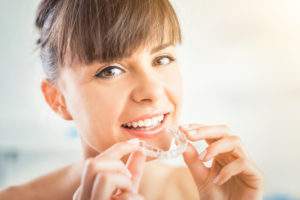
What Can You Expect?
Many people aren’t quite sure what to expect from their first orthodontic visit, as orthodontists don’t do the same work that dentists do. Dr. Hardy will meet with you for an oral evaluation and orthodontics consultation. He will examine your bite and alignment and will determine your candidacy for specific procedures if they are needed. Oral health issues—such as periodontal (gum) disease—will have to be resolved before the teeth can be straightened.
If bite and alignment issues are not present, you can move forward with regular straightening treatment. Dr. Hardy will take impressions of your teeth and will plan out a trajectory of your orthodontic plan. This is where you can know how long you will wear braces and how your mouth should look by the end of your treatment. You will also choose which orthodontic option you would like (traditional, lingual, ceramic or Invisalign) so that appliances can be made to fit your mouth.
After your consultation, your next appointment will be your braces fitting. After that, it’s easy to care for your mouth between quick adjustment appointments. Always brush and floss your teeth, and do these two habits more often than you used to. If you are wanting adult braces, consider Invisalign or lingual braces, as these options keep your orthodontics concealed if you need them to be. For all your questions about adult braces, call Belmar Orthodontics today at (303) 225-9016!
How Bite Correction Can Change Your Life?
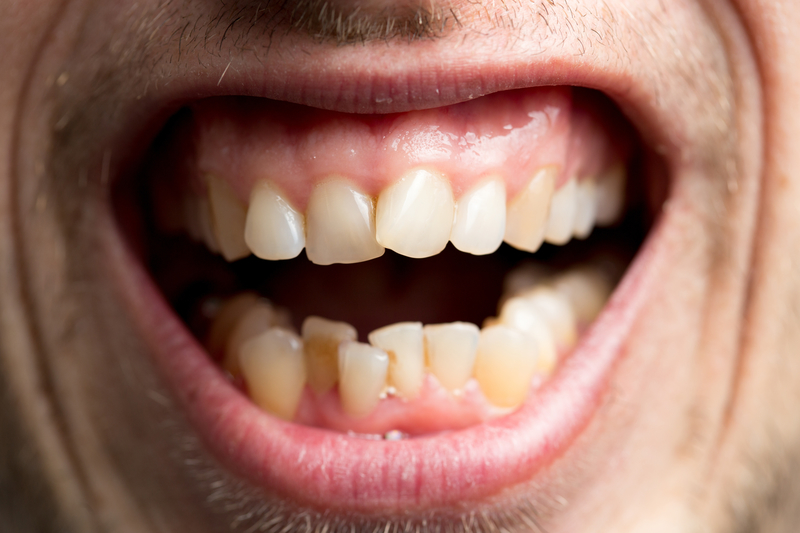
Do you or your child have a problem with their bite or alignment? These problems can seem small at first. However, as a child grows into an adult, bite or alignment issues could cause many health problems. It can even cause speech impediments and difficulty chewing in the future. Find out how bite correction can improve your health and just how important it is to get bite correction via braces if you need it!
Your Bite Should Be a Certain Way
The structure of your mouth is defined by how your teeth and jaws are formed. Your upper jaw and your lower jaw should both follow the same arch in a U shape. Those arches should also line up together. The teeth as well, should lie on top of one another evenly, with your back top molars resting on your back bottom molars all the way towards the front. In a normal bite, the front top teeth will rest on top of your bottom teeth, except they will be just slightly in front of those bottom teeth.
Orthodontic care is not just for teens that are looking to get a straighter smile. In fact, about 1/4th of all people that wear braces are actually children! The American Association of Orthodontics recommends that children have their first orthodontic visit between the ages of 7 and 8. Having an examination early-on helps prevent the progression of orthodontic issues, such as a misaligned bite. How a child’s mouth is forming is a great indication of what their mouth will look like as an adult. If we can already see that their teeth are growing at the wrong angles, or that their jaws don’t line up, we can predict that oral health issues will be present in the future. That is why having this orthodontic appointment at 7 or 8 is so important.
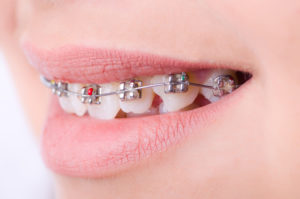
Types of Bites
When a child comes in to have their mouth examined, we can see how the top and bottom jaws line up. In a mouth with correct bite formation, the jaws will line up. If they do and the teeth are not coming in at crooked angles, then a child won’t need orthodontic care unless they want to straighten their teeth later on in life. However, prompt treatment will be needed for alignment and bite correction if a child or older patient has:
- Overbite – The upper front teeth overlap too much over the bottom front teeth.
- Underbite – The upper front teeth rest behind the bottom front teeth.
- Crossbite – Teeth are at varying angles in the mouth, which can lead to decay, broken teeth and speech problems.
Benefits of Bite Correction for Children
The ideal time to receive any treatment for bite correction is during the childhood years. This is when the mouth and jaws are still growing. Because the bones aren’t set yet, it is much easier for an orthodontic appliance to mold a bite into the correct shape without too much effort. This is generally why a child would receive bite correction treatment before they are 10 years old.
If a child receives bite correction via braces, they benefit from their mouth forming correctly. Where there were once speech problems developing, their speech can start to sound normal without lisps or other impediments. Facial features will appear more normal because the structure of the mouth will be maintained with orthodontic appliances. In a child with severe bite problems, some people can physically see parts of the jaws jutting outward. This makes the face look different than it should, and speech will almost certainly be compromised. We stop that incorrect shaping before the jaws harden later on and before dental diseases and problems are developed.
Even if you don’t detect any dental issues with yourself or a child, there are still many advantages for bite correction and braces at an early age such as:
- Observing the progress of incoming teeth
- Monitoring facial and jaw development
- Guiding incoming teeth into their ideal position
- Detecting hidden dental issues
- Reducing the risk of impacted teeth
- Decreasing the risk for permanent tooth extractions (as teeth won’t get uneven pressure that breaks them)
- Reducing the risk of cavities and gum issues that happen when the teeth are crooked and harder to clean
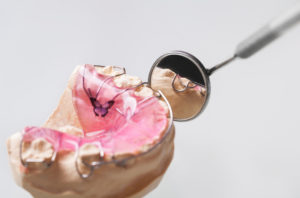
Benefits of Bite Correction for Adults
If you didn’t receive orthodontic care as a child, it is not too late to receive it later on in life. Adults and teens make up the other 3/4ths of patients that get braces. At about age 11 or 12, most of the permanent teeth should be in the mouth. At this time, we can look at a patient’s teeth and see if they need their teeth straightened. When bite problems are present (because child orthodontics was not done), it is harder to do them as teens and adults, but it can be done with normal orthodontic appliances. In some cases, some surgery may be done to reshape areas of the mouth that have hardened into place.
However, the benefits of bite correction and tooth alignment for teens and adults is astounding. Studies show that people perceive you as more successful, healthy and happy if you have straighter teeth than if you have crooked teeth. You’re more likely to get a job over someone that has crooked teeth, because your smile is an expression of your health and how well you care for yourself. That can translate into how well you care for other things, like your obligations.
Studies show that in adults and children alike, that confidence soars and smiles are shared more often when people feel good about their smiles. That confidence boost can change your entire outlook on life, and can lead you to be a more successful person than you otherwise could be. If you have teeth in need of bite correction or straightening, don’t hesitate to see what orthodontic care can do for you! Call Belmar Orthodontics today at (303) 225-9016!
Be Vigilant with Your Child’s Oral Health
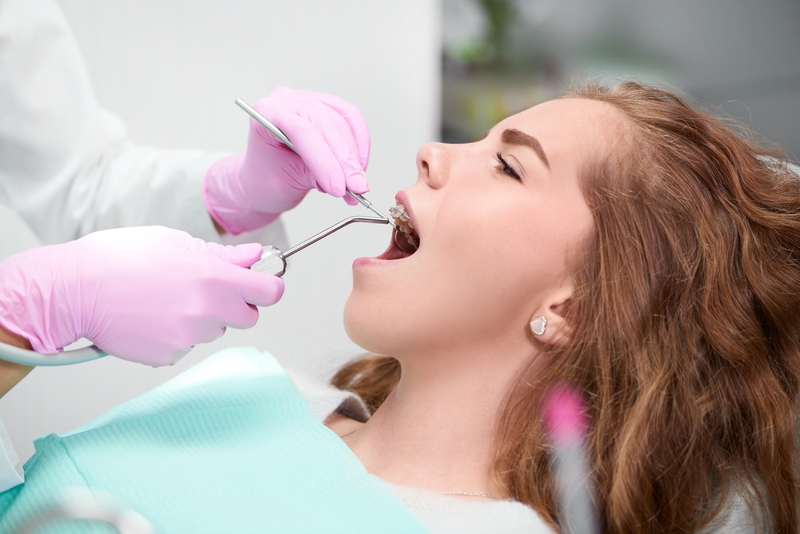
More than half the people that wear braces are children and teens. This can be an exciting time for kids to fix bite problems and crooked teeth. However, tooth decay and oral health problems also run rampant during braces if oral hygiene guidelines aren’t followed. Sometimes children and teens need a nudge to help them with their oral health. Find out what they should be doing to care for their braces during this time!
Facts About Braces
Did you know that there are over 4 million people in the United States each year that wear braces? About 1/4th of those are adults and the rest are children and teens. Patients use braces as teens to straighten the adult, permanent teeth that have come in. When children have child orthodontics, those brackets and wires are meant to correct bite and alignment issues that could cause a child severe problems in the future. Children can then straighten their permanent teeth later on.
There are common oral health problems that many children face today. It’s called tooth decay, and the National Institutes of Health reports that it’s the most “prevalent, chronic disease” among children and adults. 42% of children will have tooth decay before they are 12. 23% of those will have untreated dental decay. About 92% of adults have had tooth decay sometime in their life. The worst part about this is that tooth decay is completely preventable if a child, teen or adult has good oral health through practicing proper oral hygiene.
It may take several years for a child to have the right dexterity in their hands to brush and floss correctly. That is why parents must take care of their child’s oral health when they are young, or it could lead to serious problems. Children rely on parents to help their mouth stay healthy. Even teens need to be told to brush and floss, as it’s something they often forget. These habits are especially important during braces, as oral health is most affected when there are brackets and wires on the teeth.
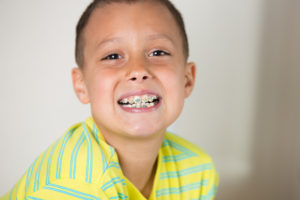
Helping Your Child’s Oral Health
The American Academy of Pediatrics recommends that children see a dentist around 1 year or within 6 months of their first tooth coming in. After that, they should go biannually to the dentist. This is how a dentist can start to see signs of bite and alignment problems, which are then referred to an orthodontist.
With some orthodontic appointments, a child can be fitted for braces to correct problems that are easy to fix with a young, moldable jaw, but hard to fix when a person is older and their jaws are set. Without braces, you will have to help your child brush and floss their teeth at least twice a day as the American Dental Association recommends. Use child toothpaste enhanced with decay-fighting fluoride and a toothbrush that fits the size of your child’s mouth.
Children will need to floss between their teeth, but might have to start out with flossers for kids. With braces, children should be brushing at least twice a day, but after every meal is even better. They should brush at 45-degree angles, making sure to move in all different directions to dislodge food that has been stuck in the braces. Flossing is incredibly important as well, as it gets 40% of tooth surfaces that are missed if flossing is skipped. Help them learn how to use threadable floss. This gets poked through the spaces between their teeth, pulled through, and flossed like you would normally do. Use a Christmas tree brush or a waterpik to help them dislodge stuck food.
Do You Have Good Habits?
One of the best ways to help your child with their oral health is to show them its importance through your own actions. If you don’t brush and floss your teeth, your child or teen may not either. When you’re also not visiting the dentist, odds are that your child isn’t either. If you eat a poor diet full of sugar, then your child will do the same. Children often copy what their parents do.
Make sure you are brushing your teeth at least twice a day, especially when your children can see you. Floss your teeth and teach them how to floss properly as well. When you need to go to the dentist, take your children with you and have them get their comprehensive exams and cleanings. All these oral health measures will ensure their mouths stay clean and healthy for years!
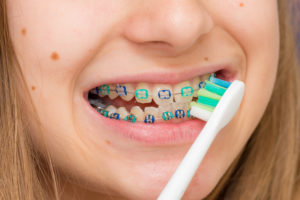
Other Factors to Consider
Your child can brush and floss their teeth often and may still end up with cavities. Cavities come from plaque in the mouth that has set on the teeth for too long. Your mouth makes plaque when you eat sugary foods and that sugar mixes with mouth bacteria to make acidic plaque. That acid is what causes the tooth decay. However, if you limit your sugar intake to begin with, you won’t have the problem with tooth decay.
Unfortunately, sugar is one of the most-consumed substances in the world. It is literally found in almost every food. That is why tooth decay is so common, especially in children. Limit your child’s sugar intake if you want them to have healthy teeth when their braces come off. Teeth that don’t get brushed or flossed often with braces, may end up having cavities, gum disease and eroded areas of their teeth when braces come off.
Their food can also leave them with squares on their teeth from the brackets, because the surrounding tooth has been damaged by food. Make sure to consider what your child is putting in their mouth if you want to help them have good oral health! For more tips or answers to questions about your child’s braces, call Belmar Orthodontics today at (303) 225-9016!
Tips for Success and Happiness with Your Braces
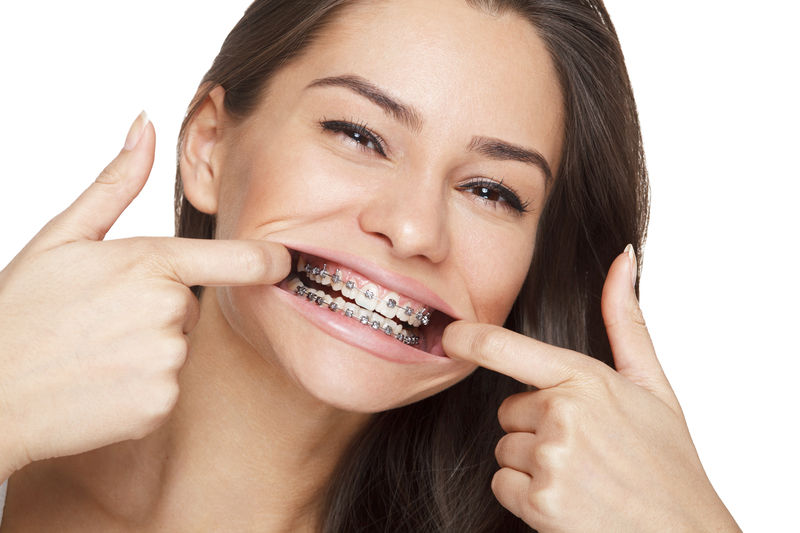
Many adults and teens feel like they will look childish with braces on. However, that still doesn’t stop more than 4 million people wearing braces each year in the U.S. Yes, braces are harder to clean and require more care. However, that care only takes a few extra minutes each day, and you have orthodontic options that can make you extremely happy with your braces. Find out how you benefit from orthodontics!
Your First Week with Braces
When you first get brackets and wires on your teeth, you will have tooth sensitivity for a few days. That sensitivity and soreness will wear off, but during that time, stick to soft foods such as pasta, yogurt, mashed potatoes, etc. Over-the-counter painkillers (like acetaminophen) can help curb pain that first week and at each braces adjustment.
Your braces will feel bulky in your mouth at first, but will quickly start to feel normal. Even though there are changes with braces, you can be successful with your treatment if you do everything the orthodontist tells you. This includes using your bands like they tell you, having good oral health and avoiding foods that can cause you trouble.
There are foods you want to avoid that will either break your brackets or wires or that will become stuck in them. Many foods on this list are also full of sugar, which is what makes plaque that coats your teeth. When plaque sits on the teeth, it decays them and erodes them. Avoid foods like:
- Hard candies
- Chewing on ice
- Apples, carrots, and hard fruits and veggies
- Popcorn (because of kernels), nuts and chunky peanut butter
- Chips and hard snacks
- Caramels, licorice, taffy, Tootsie Rolls, Starbursts, Sugar Daddies, Skittles and similar candies
- Corn on the cob
- Dried fruit, fruit snacks and gummies (which get stuck in brackets and teeth)
- Gum

Taking Care of Your Teeth
Caring for your teeth through proper oral hygiene is essential if you want to love your braces and if you want your teeth to be in good shape when they come off. Patients who skip brushing and flossing will end up with tooth decay, tooth erosion (worn away areas of the teeth) and stains on their teeth when the braces come off. Don’t let that be you! Follow these tips for taking care of your braces successfully:
- Brush, brush, brush! Aim for three times a day instead of just the recommended two times. The American Dental Association recommends that patients brush for at least 2 minutes every time, at least morning and night. Choose a soft-bristled toothbrush that will be more gentle on your teeth and switch out your brush every 3 months.
- Floss your teeth. Flossing is the thing that is most often skipped, especially by children and teens. However, flossing gets about 40% of your tooth surfaces that brushing misses. It is one of the only ways to dislodge stuck food that will decay your teeth. Floss 1-2 times a day. However, invest in flossers or threadable floss, which you can pull through the cracks in your teeth, getting under the wires. This makes flossing so much easier.
- Use a Waterpik and brush. Patients often get food stuck in their teeth that flossing and brushing can’t get out. A waterpik is a small device that shoots water. You shoot the water where you want to dislodge the food or particles in brackets or in between the teeth. A braces brush looks like a tiny Christmas tree. It can get all the gunk out of your brackets and wires with ease.
- Don’t chew on non-food items! Pencils, fingernails, and any other hard item can break your braces.
Benefits that Braces Can Give You
Some patients love their braces, while others don’t. If you are the latter, just remember why you are getting braces: you are looking forward to that beautiful, straight smile. You only have braces on for 1-2 years. If you get through that time, you get to have a straight, beautiful smile for life. Studies show that your smile goes a long way as well. It’s one of the first things others notice about you. In studies done about straight teeth vs. crooked teeth, the impressions others got were quite impressive:
- Invisalign (Align Technology) found that people with straight teeth were 45% more likely to be hired for a job.
- They were seen as 58% more likely to be wealthy and successful.
- People perceived people with straight teeth as healthier, happier, and even smarter than others.
- A whopping 73% of people were more likely to trust someone with straight teeth as well!
Whether you love your braces or not, just remember the amazing benefits that come from having a straight smile. It will not only improve your social life, but straighter teeth are easier to clean and less prone to tooth decay and oral health diseases as well.

Being Happy with Your Braces
The best way to be happy about your braces is to choose braces that you love. Some patients prefer metal braces because they are the most economical choice, while others like Invisalign because they are removable. Patients also enjoy clear, ceramic braces that are like traditional braces, but made from white, ceramic material. If you want the sturdiness of metal braces, but want them hidden like Invisalign, you can also choose our lingual braces option.
These are braces hidden behind the teeth. If you are self-conscious about your appearance and want to straighten your smile quickly, this may be the option you want. No matter what you choose, remember that this is your only time with braces! Enjoy going through this journey and even get your braces at the same time as your friends to make it more fun. For tips about adjustments, appointments and any extra tips for your braces, call Belmar Orthodontics today at (303) 225-9016!

